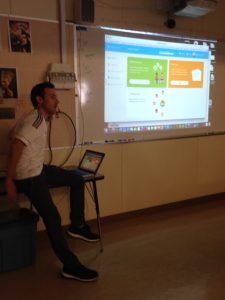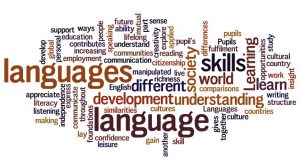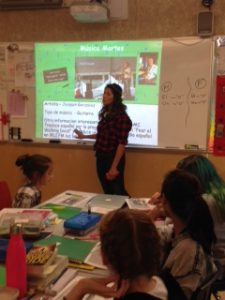A Window into Culture
December 9, 2016 - 7 minutes readAlthough learning French throughout high school was enjoyable, it required hard work. I liked conjugating verbs and analyzing how the structure of sentences varied from English and I recall spending a great deal of time memorizing. Beyond the school walls, I rarely had the opportunity to practise speaking French in authentic settings. Certainly today I would require ‘direct support’ to converse in French!
In my early twenties I lived in Norway for a year. In order to prepare for this adventure, I took Norwegian lessons in hopes of acquiring the basics necessary to interact respectfully with others. While living in Oslo I enrolled in more lessons to further expand my knowledge of the Norwegian language. My written ability was comparable to that of a high school student and I could read and understand quite a bit of written text. However, my auditory processing left a bit to be desired as I couldn’t understand much of what I heard and I certainly didn’t feel confident to speak. However, I blended in quite nicely with the Norwegian folk and bumbled along, adapting to the culture and developing coping strategies in order to function and fit in.
As I listen to our West Bay student announcers each morning, I marvel at their efforts and ability to speak French, Squamish, and Spanish. I reflect on my own experiences learning languages and I am pleased we are exposing our young students to multiple languages, thereby enriching their school and life experiences. This year we are offering Spanish as an option to French at the Grade Seven level. Many students have been at West Bay for most or all of their elementary years and have received French instruction since Kindergarten. As Spanish is offered at high school, we were keen on exposing our ‘graduating’ students to this alternate language. By providing a ‘taste’ of Spanish, we hoped it would help them make an informed decision as to which language to pursue in high school.
The benefits of providing a language choice go beyond merely supporting decision-making for future study. Research indicates there are numerous advantages to learning a new language. Basically, it’s good for the brain! The brain must learn to operate differently which develops a variety of cognitive skills and enhances performance in other academic areas. Multilingual people often have more career doors open for them as they are perceived as being flexible, innovative, and good decision-makers. Developing open-mindedness and an appreciation of diverse cultures are also key benefits of learning a new language.
Grade Seven language teachers Jessica Eguia (Spanish) and Kevin Darling (French) encourage both of their classes to take risks with language. They want their students to gain confidence pronouncing new words or trying new phrases with others in the community as they feel that real-life connections and practice give the language purpose and make it more enjoyable to learn. Both teachers report that students are excited to self-direct their own learning using Duolingo. This online program helps them gain confidence as well as develop proficiency in the language under study.
 Ms. Eguia showed her students videos of Hollywood stars or international business entrepreneurs using language to build connections and relay messages to people around the world. Because the speakers were not communicating in their first language, they made many pronunciation errors. The students could see how these people were making an effort to be understood in the global community. They discussed how learning a language requires a growth mindset. Students identified how confidence, risk-taking, communicating, and reflection are all important traits and attitudes that are developed in the language learning journey. Ms. Eguia shares,
Ms. Eguia showed her students videos of Hollywood stars or international business entrepreneurs using language to build connections and relay messages to people around the world. Because the speakers were not communicating in their first language, they made many pronunciation errors. The students could see how these people were making an effort to be understood in the global community. They discussed how learning a language requires a growth mindset. Students identified how confidence, risk-taking, communicating, and reflection are all important traits and attitudes that are developed in the language learning journey. Ms. Eguia shares,
“We show each other respect when we mispronounce words, we are risk-takers when trying out new ideas in Spanish, and overall we are respectful communicators. Language is a powerful tool and we are principled when using it. Our learning community is now in a place where we can stand up, do parts of our presentation in Spanish and not be afraid if we say it wrong. We know that we’re at least curious, trying, enjoying communicating about a topic we’re passionate about, and being open to feedback.”
Both Ms. Eguia and Mr. Darling speak passionately about how language is a window into culture. Much can be learned through studying cultural traditions from food and myths to dances and music. One Grade Seven student reflected,
“I had no idea that Spanish was spoken outside of Mexico. I had no idea that many of the traditions were thousands of years old, like the Day of the Dead and that many of these traditions have Aboriginal knowledge. When I learn Spanish, I learn so much more about the world around me.”
Below is a picture of students having fun following a Spanish recipe and cooking together.
Students’ experiences in language classes at West Bay vary considerably from those of the children pictured below. These students are learning foreign languages at a Grammar School in the 1960’s. My memories of learning French and Norwegian fall somewhere in between these two instructional approaches!
Photo: Getty Images
I hope to continue to find ways to embed language learning into our school community. In a world that arguably has more tension and less certainty ahead, we can do our part in schools by using language learning as a vehicle to promote greater understanding and respect of cultural diversity. Developing tolerant, compassionate, open-minded young citizens of the world is surely an important goal.




Recent Comments